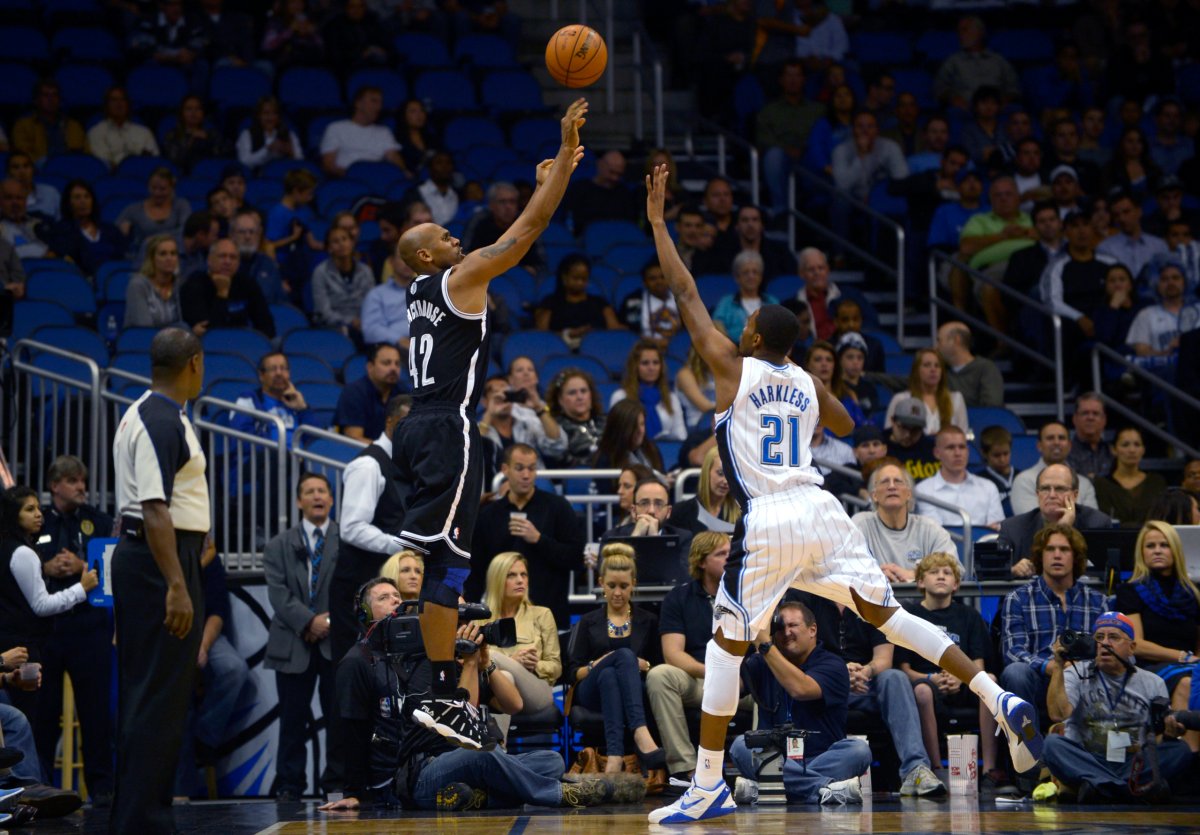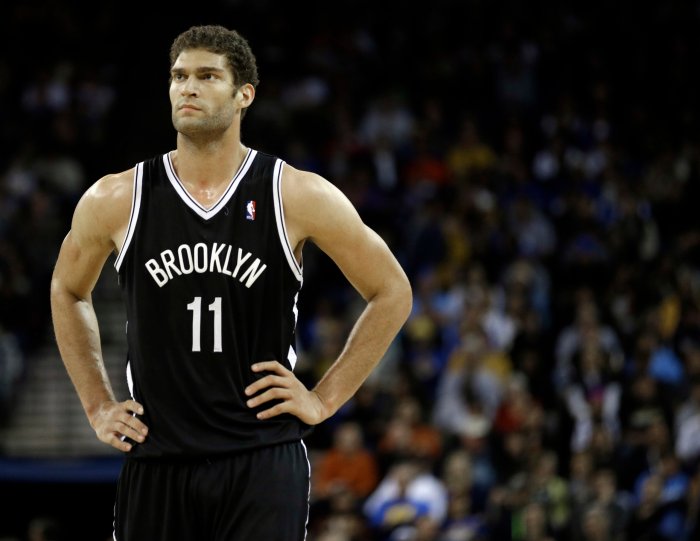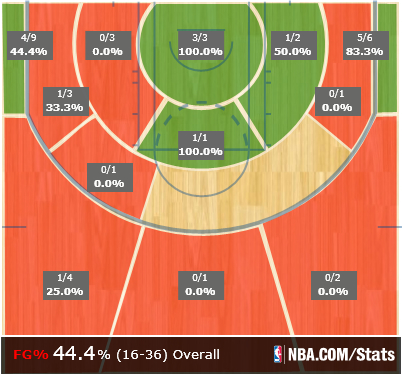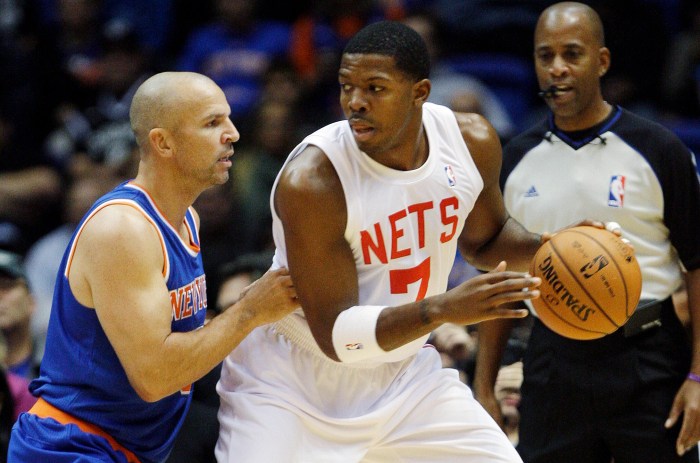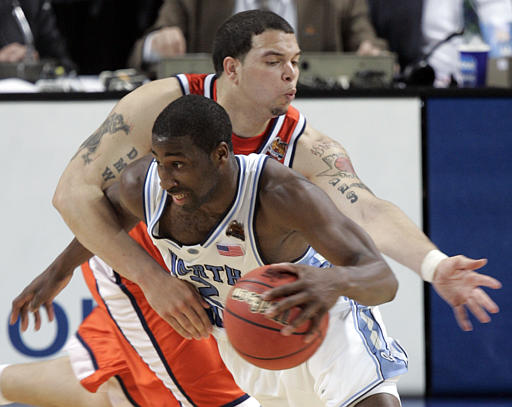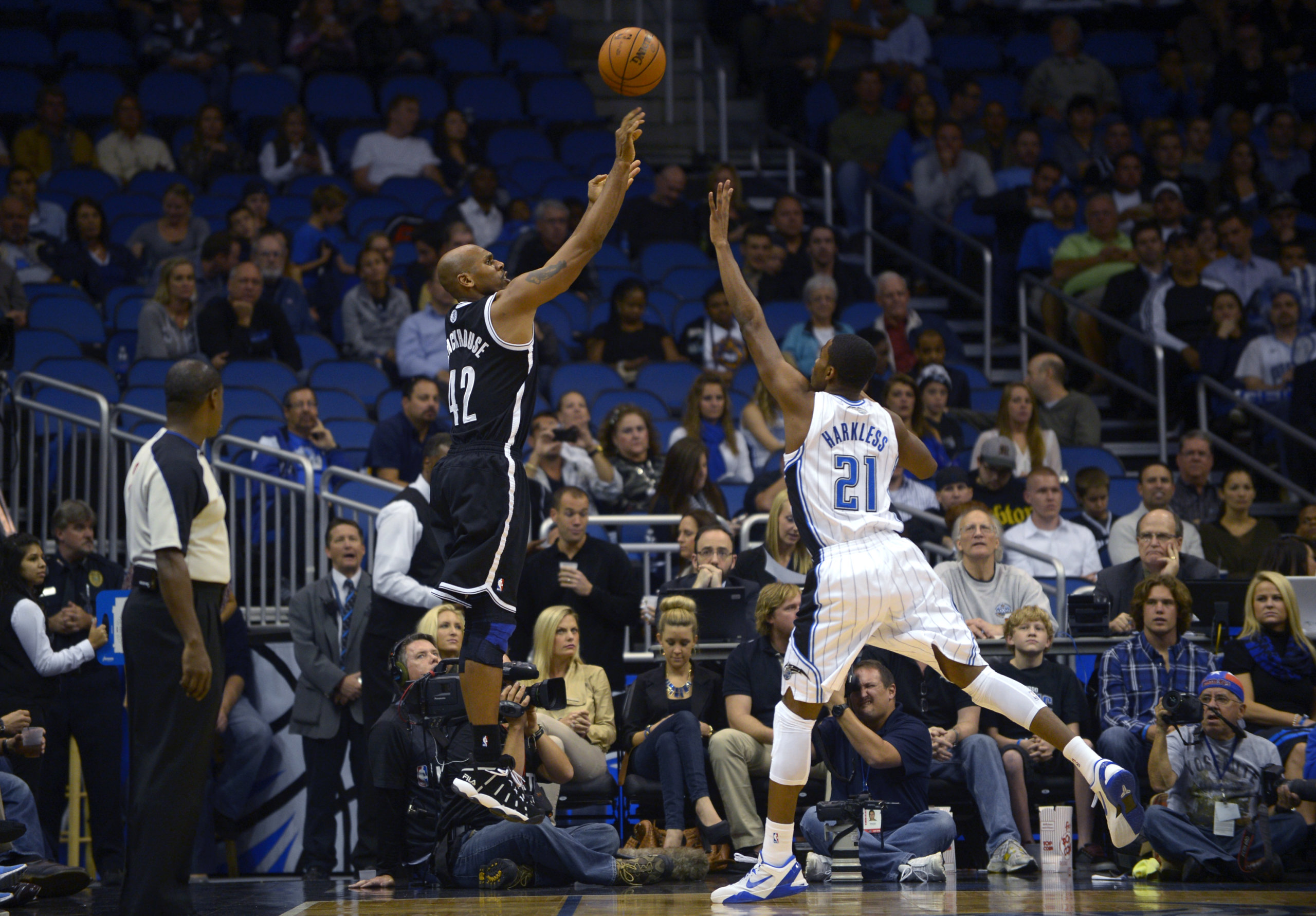
Plus-minus can often paint a unique picture of game flow. It’s a simple metric that measures one thing: how well did the team performed with a player in the game. If you come into a tie game and leave with a five-point lead, your +/- is +5. If your replacement comes in and the team promptly falls behind by seven, his +/- is -12. Simple enough.
It’s a number that’s often subject to random chance, but it’s also subject to the whims and mercy of Brooklyn Nets backup shooting guard and 38-year-old fire-breathing mastodon Jerry Stackhouse.
Through 9 games and 142 minutes, Stackhouse has an overall +/- of +91. That raw total — without accounting for minutes played — ranks Stackhouse 17th in the NBA. What makes that notable is that Stackhouse has only played 142 minutes, ranking him 286th in the league in minutes played. Everyone above him on the list has played 333 minutes or more.
For Stackhouse, a +91 in 9 games comes to an average +/- of +10.1 per game. By per game numbers, Stackhouse ranks third in the league, behind Kevin Durant (+10.8 per game) and Marc Gasol (+10.7). But Gasol and Durant both play tons of minutes — Durant’s averaging over 39 a game and Gasol over 36. Stackhouse is putting down just under 16 minutes per game, well below half of either player.
So adjusting for a full game, Stackhouse’s plus minus is +30.8 per 48 minutes — far and away the best in the league. Second? San Antonio Spurs shooting guard Manu Ginobili, at +16.6. The difference between Stackhouse and Ginobili is equal to the difference between Ginobili and Knicks backup point guard Pablo Prigioni, who ranks 103rd in the league (minimum 140 minutes). It’s, as John Hollinger put it last night, simply unfathomable.
Even if it’s a result of small sample size (which, okay, it absolutely is), the fact remains that the Nets have been unbelievably better with Stackhouse on the floor, and to some degree, part of it makes sense. Stackhouse doesn’t force bad offense. He rarely turns the ball over, even on the few occasions he handles it. He occasionally will come to the top of the key to take the ball back out and reset the offense, but he mostly roams from opposite corner to opposite corner, waiting in the wings for his defender to inevitably sag off enough to give him an open look. And opposing defenses just… forget about him.
For Stackhouse, who came on as a player/assistant coach, it’s all a matter of preparation. “I came in with the approach. Everyone was talking for me. I did everything. We were out on the track in September, I was out on the track of September, making sure that I was preparing and not putting myself behind anybody.”
That’s not to say he didn’t get a few cracks in. “I was in a playoff series against this team last year, and didn’t even get in the game,” Stack joked. “Who was the smart guy that decided that?”
Watch Boston forget about Stackhouse’s presence on the floor for each of last night’s five threes:

